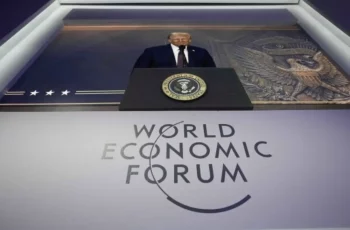
Donald Trump may use new precedents to exert pressure on his neighbor.
The statement by US President Donald Trump about the need to make Canada a new US state, as well as the introduction of protective duties (as with many other countries) led to tension in relations between the two neighboring countries. Earlier on, political upheavals in the United States had a response in Canada. That said, the reasons were very different. For example, many U.S. citizens migrated to Canada to protest the wars in Afghanistan and Iraq unleashed by George W. Bush. Some were not satisfied with the surveillance of the American special services and they felt that they would be more comfortable in Canada.
Canada’s current retaliatory measures will affect a wide range of American goods, but will also affect the domestic market, especially the agro-industrial complex. But the consequences of these reciprocal measures will have wide-ranging outcome.
It is noted that even hockey has never been separated from the cross-border economy, and the geopolitical relations between Canada and the United States are always reflected in the game. And in hockey, Americans owe the most to Canada. At the same time, they want to monetize, commercialize and use this Canadian resource to become an independent leader. And Canadians don‘t like it.
And if to turn to historical memory, we can find a number of other reasons for mutual resentment and claims. Back in the 18th century, during the US War of Independence, Americans were already looking north, hoping to annex the province of Quebec. And during the Anglo-American War of 1812-1814, the United States nevertheless tried to expand its borders, but was defeated, as a result of which in 1814 the British captured Washington and burned the Capitol. Interestingly, the conclusion of a peace treaty in December 1814 was mediated by the Russian Emperor Alexander I.
For the American self-identity, this is, of course, a black date in history.
However, the territorial disputes between Canada and the United States have not yet been resolved. And an economic war can increase these tensions, since the zones claimed by the two states are directly related to economic interests.
There are five marine areas in total where Canada and the United States disagree about their affiliation.
The first disputed area is the Strait of Juan de Fuca, which separates Vancouver Island in British Columbia (Canada) from the Olympic Peninsula in Washington State (USA). The border between the two countries runs right in the middle of the strait. Both countries agree that the border should be equidistant here. But each side uses slightly different base points, which leads to slight differences in the border line.
The situation is different at the entrance to Dixon Bay. To the north of it is Prince of Wales Island, which belongs to the United States. To the south of the entrance to Dixon is the Canadian archipelago of Haida Gwaii, known until 2010 as the Queen Charlotte Islands. The water space between them is rich in fish. There is a catch of Pacific salmon, which goes to spawn. Because of this, the so-called “salmon wars” took place in the 1990s, when both sides occasionally arrested each other’s fishing crews.
According to the international arbitration of 1903, the maritime boundary is a line from Cape Muzon, the southernmost point of Dall Island, the southernmost island of Alaska, east to the mainland. Because of this, most of the maritime territory belongs to Canada.
But in the United States, they believe that the maritime border runs much further south and cuts the entrance to Dixon in two: the northern one leads to the United States, the southern one leads to Canada.
There is a disputed wedge-shaped area in the Beaufort Sea north of the point where the border between Alaska and Yukon Territory faces the sea. This land border runs along the 141st western meridian, as agreed in the Treaty of St. Petersburg of 1825 between Russia and Great Britain.
Canada believes that it is necessary to follow this line 200 nautical miles (370 km) north into the sea, and this is the maritime border. But the United States argues that the maritime boundary should be perpendicular to the coastline when it goes out to sea. The difference is an area of about 8,100 square miles (21,000 square kilometers).
Since, according to the National Energy Board of Canada, this wedge can contain up to 1.7 billion cubic meters of gas and 1 billion cubic meters of oil, this can cause a serious conflict between the countries.
Another controversial location is the Northwest Passage, which represents a route through various channels through the northern archipelago. Since the melting of the ice makes it more convenient for navigation, Canada can provide this transit route for a fee. But the United States does not agree with this. When Canada confirmed its sovereignty over the Northwest Passage in 1986, Washington did not recognize this claim. In 1988. The countries signed an agreement on cooperation in the Arctic, where it was noted that vessels in transit passage should not request permission from Canada, but could not engage in research. In 2005, an American vessel was in the passage for an explicit research purpose, and after that, Canada stopped using the term “Northwest Passage” and designated the area as “Canada’s Internal Waters.”
The United States adheres to its interpretation of international law and reserves the right to treat Canada’s Internal Waters as international waters instead, calling it the “right to free navigation.”
Another point of conflict is Machias Seal Island off the coast of Maine. It is less than 10 miles off the coast of Maine. Canadians are physically present there as lighthouse keepers. But the United States considers this island its own. Conflicts between fishermen of the two countries have also already arisen in this location.
In addition, there are also problems at the land border related to crossing checkpoints. As US border control measures increase due to the fight against illegal migration, this will clearly lead to a deterioration in relations between specific agencies, and various human rights organizations will accuse the US government of discrimination.
Judging from above, in addition to the accusations already voiced by Donald Trump, there are quite a few nuances that can bring the escalation in relations between the countries to a new level. And any new precedent can become a catalyst for such a process.










Comments